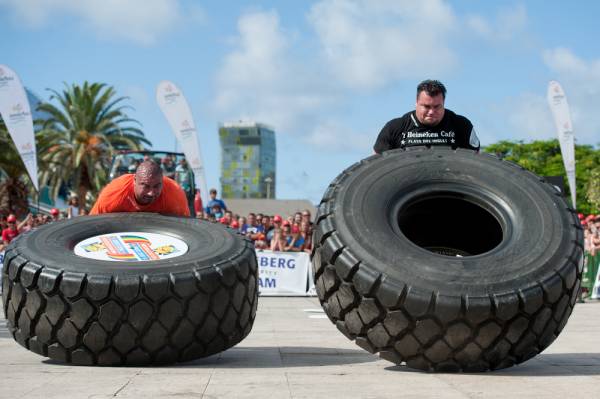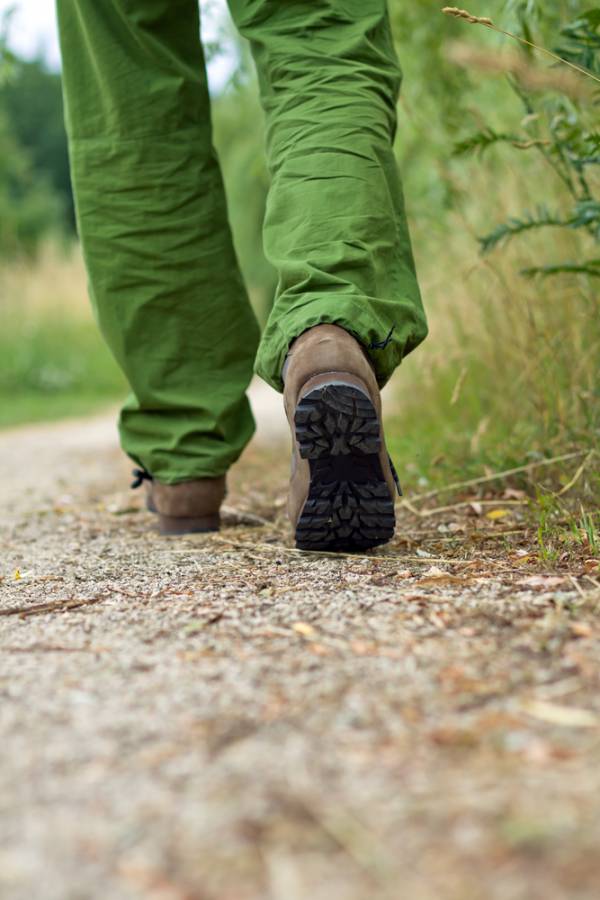Unless you’ve been living in a cave recently — or perhaps because you’ve been living in a cave recently — you’ve probably heard of the concept of “Paleo” or “primal” fitness.
First impression: Hey, that sounds pretty cool. Hardcore.
Unless you’ve been living in a cave recently — or perhaps because you’ve been living in a cave recently — you’ve probably heard of the concept of “Paleo” or “primal” fitness.
First impression: Hey, that sounds pretty cool. Hardcore.
After all, if you’re a cubicle droid whose life blood and soul is draining into a giant corporate machine, drop by squeezed-out drop, the idea of running free on the savannah, living by your wits and teeth, maybe even getting naked, sounds kinda awesome. Screw the Globo gym! It’s time to eat meat and bash things with rocks! Yeah!
Second impression: Um… how do I actually do this primal fitness thing?
Well now. There are plenty of theories.
Frank Forencich, who runs Exuberant Animal, recently penned a fine little essay called “The State of the Meme”. In it, he explored the various strains of how we’re thinking about so-called primal fitness, including:
- Academic Paleo: a scientifically-minded, evidence-based exploration of the data that tells us how ancient humans actually lived and moved. Probably the most correct, but slow going.
- Cartoon Paleo: aka the Flintstones. No basis in evidence, just grab your leopard-skin toga and you’re ready to roll.
- Romantic Paleo: torn, along with a fur bodice, from the cover of your drugstore pulp novels — adventure! sex! living free! hot bodies!
- Athletic Paleo: aka the idea that all primal humans were athletic superstars who never met a ridiculously impossible, gut-wrenching challenge they didn’t love. (Aka: “You modern humans are pathetic sniveling wimps. Excuse me while I bathe in ice water and bite the head off a lion.”)
- Dietary Paleo: Focused on both general principles (e.g. eat whole foods, lots of dead animals, plenty of plants, avoid tofurkey like it’s sliced cancer, etc.) as well as lots of probably unimportant debates (e.g. is coconut flour Paleo, is eating fruit in winter going to make your pancreas explode, etc.).
The final option Forencich suggests: Whole Paleo. The Big Picture. An approach that integrates things like land and terrain, culture and community, movement and mobility, and ethical-spiritual worldview. In other words, not just bacon and badassery. Not just smashing and sprints.
I’ve been thinking about these ideas since getting back from the 2011 Ancestral Health Symposium in Los Angeles, particularly after seeing Forencich’s excellent presentation in which he highlighted some other crucial — indeed, arguably more essential than one’s sprint time — elements of being a successful primal human. These included things like:
- focus & directed attention
- care, sensitivity, and self-awareness
- being able to read the environment and one’s surroundings
- teamwork
- patience
- wisdom and the insight of experience
Huh. All that is starting to sound awfully like the skills one needs to survive in the 21st century “knowledge economy”.
So where does that leave us as fitness-oriented folks who are looking for something fun, interesting, and reasonably well aligned with our bodies’ natural inclinations? (And, might I add, those of us girlpeople who don’t quite relate to the whole Man the Dumb Hunter schtick.)
One option is what I call synthetic primal.
Synthetic, in this sense, can mean two things:
- created; artificial; non-”natural”
- bringing-together, as in synthesis

In the first sense, I mean the creation of a primal-style fitness that necessarily lives in modern times. Almost none of us have the luxury (or the burden) of living fully wild. I’m writing this and you’re reading it on a computer, for heaven’s sake.
We have to create our own primal, using what we have available to us. We have to make our own fun.
In the second sense, I mean bringing together all the elements that make primal-ness cool, interesting, and valuable. Such as:
- getting outside as much as possible
- bringing our bodies into sync with natural rhythms — of seasons, of what’s around us, of daily cycles, etc.
- moving in a variety of ways, in many planes — up, down, back and forth, sideways, diagonally, in spirals, in arcs, on one limb or two, asymmetrically, fast, slow, fast-then-slow, etc.
- moving against many forms of resistance — our own bodies, someone else’s body, wind, gravity, a heavy object, our own inner sloth, etc.
- moving awkward loads — rocks, things with shifting weight, things that are hard to grasp, people, etc.
- moving in real ways — on two legs, on all fours, climbing, jumping, scurrying, scampering, rambling, hauling, dragging, shoving, tumbling, rolling, crawling…
- moving creatively and dynamically, in response to the changing needs and demands of our surroundings and ourselves — being “flexible” in the truest sense
- feeling and experiencing our surroundings and ourselves in a meaningful way, rather than numbing or zoning out with music or over-protective gear or over-protective eating/drinking — feeling the ground under our feet (or the air under our feet as we jump and tumble); feeling the cold or sun or rain on our faces; feeling our bodily sensations of apprehension, fear, surprise, joy; letting ourselves get hungry or thirsty rather than rushing to appease those things with sugary protein bars or Gatorade in case we go “catabolic”, etc.
This also means taking risks that are intelligent and informed; sometimes unexpected; but not rash or stupid — or intended to show the world how “tough” we are.
Primal humans could not afford to be self-centered idiots. If you make a mistake as a primal human you might die. If you get injured as a primal human you might die. If you over-stress yourself as a primal human you might die. If you ignore your relationships or your surroundings you might die.
In other words, you conserve and respect all forms of energy and resources instead of wasting them. You prioritize working hard and recovery. Work and play. Body and mind and spirit. Self and community. Together. As one. Integrated.
Great start. But how do you organize a fitness routine around it?
Well, begin by reviewing the list of elements above. How could you integrate even one or two of them into your current fitness routine?

Could you…
- …get outside now and again?
- …pay more attention to your surroundings?
- …make movement a social act?
- …try moving more functionally, more real-world-ly?
- …try mixing it up depending on your individual response on a given day, or in a given situation, or for a given task?
- …try linking your brain to your body — solve a physical problem thoughtfully; include “body knowledge” in your educational repertoire; use movement to think through intellectual problems?
- …lighten the hell up and have some fun for a change? (There is no evidence that tells us primal humans were a miserable, numbers-oriented, Type-A group logging their daily mileage or bragging about their shin splints, FYI; many ancestral languages don’t even have words for numbers bigger than two — so put that in your training spreadsheet and smoke it.)
You get the idea. Start small, start simple. Get creative. Try stuff. Keep it real. Keep it whole.
Don’t worry so much about what is “truly” primal. Strip away what is inessential and retain the fun, purposeful, creative, responsive, integrated, real-world-oriented basis of human movement.
No leopard-skin toga required.
To read more from Krista Scott-Dixon visit her website – Stumptuous.com.






